Bluetooone
Sep 2004
4 mins read

The information on this page is intended to help people that want to modify their bluetooth equipment in order to connect an external (directional) antenna to their Bluetooth dongle. This Bluetooth tuning makes it possible to concentrate the emission of bluetooth signals to one direction instead of any direction. This direction of signals enhances the range of bluetooth radios. An enhanced range could be used for experiments like the long distance snarf.
As hardware to modify, we suggest the Linksys Bluetooth USB Adapter since it already has an external antenna. So the case does not have to be modified. If you have a MSI dongle already, please go to the pentest page.
Instructions
First of all, you need to carefully open the case of thje USB Bluetooth Adapter. The case seems to be glued together, so that it is rather difficult to get the two parts apart without damaging them. We recommend using a guitar plectrum (pick) since it consists out of very durable material and is quite thin. Carefully rake in the notch of the case. Impose a little force so that you hear a low cracking sound. Do not impose to much force. When you did this all around the case then carefully twist the pick and open up the case of the adaptor.
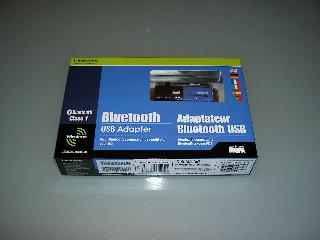
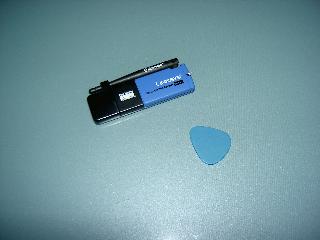
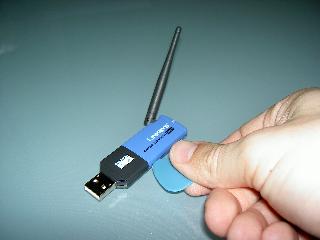
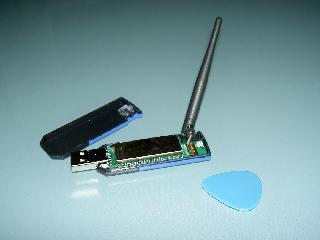
What you see now is the inside of the USB adaptor. The small antenna is soldered to the board at two small plates. One for the shielding and one for the signal. Now heat up the solder joints and remove the small antenna. If you are not an experienced solderer, you should ask an expert to help you. In my case the expert was Dietmar Holztrattner (Thanks again!).
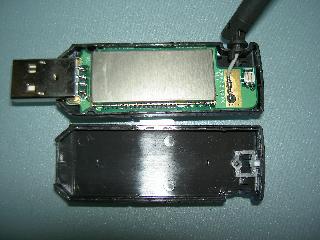
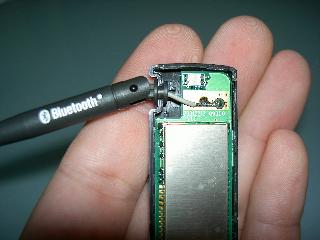
Prepare a coax cable (remove insulation) and put some solder at the ends of the shielding and the signalwire. Now solder the wires to the appropriate plates. After this, you are done with the picky part.
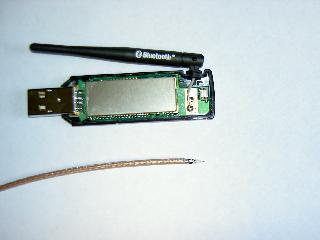
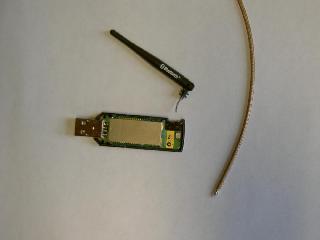
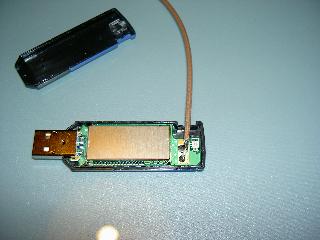
In order to protect the cable from being torn out to easily, you should stick it down with some hot melt adhesive. After the hot melt adhesive got hard, you should put back the top part of the case. Glue the case back together with some quick-setting glue. We also used a cable tie to furtherly release potential tension from the solder joint.
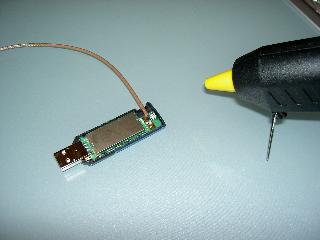
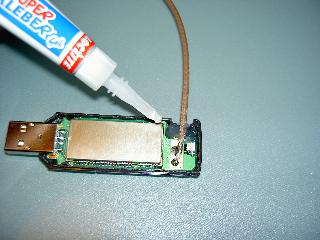
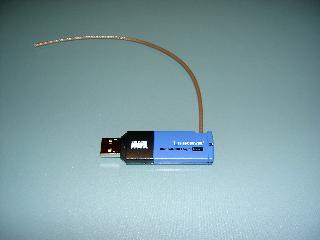
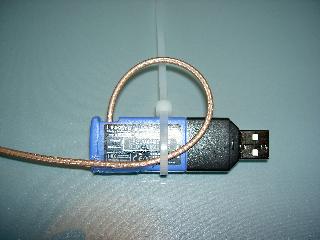
Now cut the cable to an appriopriate length and prepare it to crimp on a reverse SMA jack to the cable. We used this kind of connector, since it is commonly used for radio devices that have antenna connectors. E.g. D-Link does offer products with this kind of connector.
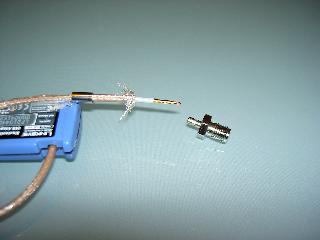
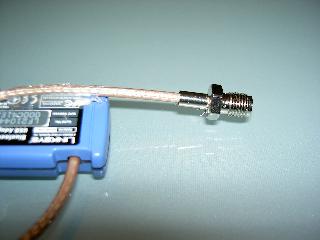
With an appropriate connector cable, you are now able to connect your modified bluetooth adaptor to your favorite antenna. Fortunately, Bluetooth operates on the same frequency as WiFi (802.11b/g) does. That means that you can use any WLAN antenna. You find a lot of instructions in the net, already.
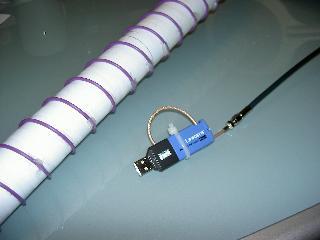
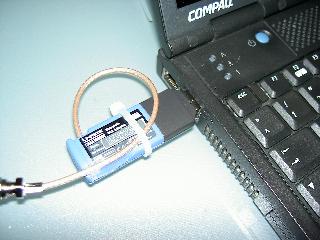
Please be also be aware of the fact that using your modified Bluetooth adaptor without connected antenna might destroy your hardware. (Due to signal reflection on the unterminated end of the cable.)
The antenna in this picture is a so-called helix-antenna, which is fairly easy to build. We used a table-tennis racked to mount it on (since it has a handle) as a reflector plate, you could also use a cd (or dummy-cd that comes with cd-r packs) that is wrapped into aluminium/copper foil. The diameter of a usual CD has approximately the same dimension as the length of a 2.4GHz wave.
Enjoy your improved Bluetooth adaptor!
Photographs
trifinite.album about the Bluetooone. This album shows every step of the modification of the bluetooth adaptor.
Pick List
1 Linksys Bluetooth USB Adapter
1 piece of thin coaxial cable (we used RG-316 cable)
1 reverse SMA jack (look here for a picture)
1 cable tie
Things you need besides the actual material
hot melt adhesive
quick setting glue
crimping equipment
soldering equipment
sharp knive
guitar pick
antenna
antenna connector cable
Links
Modifying a Bluetooth dongle for an external antenna - Tim Hurman and Mark Rowe (pentest) explain how to modify a MSI Bluetooth adaptor
www.myteron.de - A comprehensive collection of instructions for building 2.4GHz antennas
People involved
In case of questions, ask Martin Herfurt.

Sharing is caring!